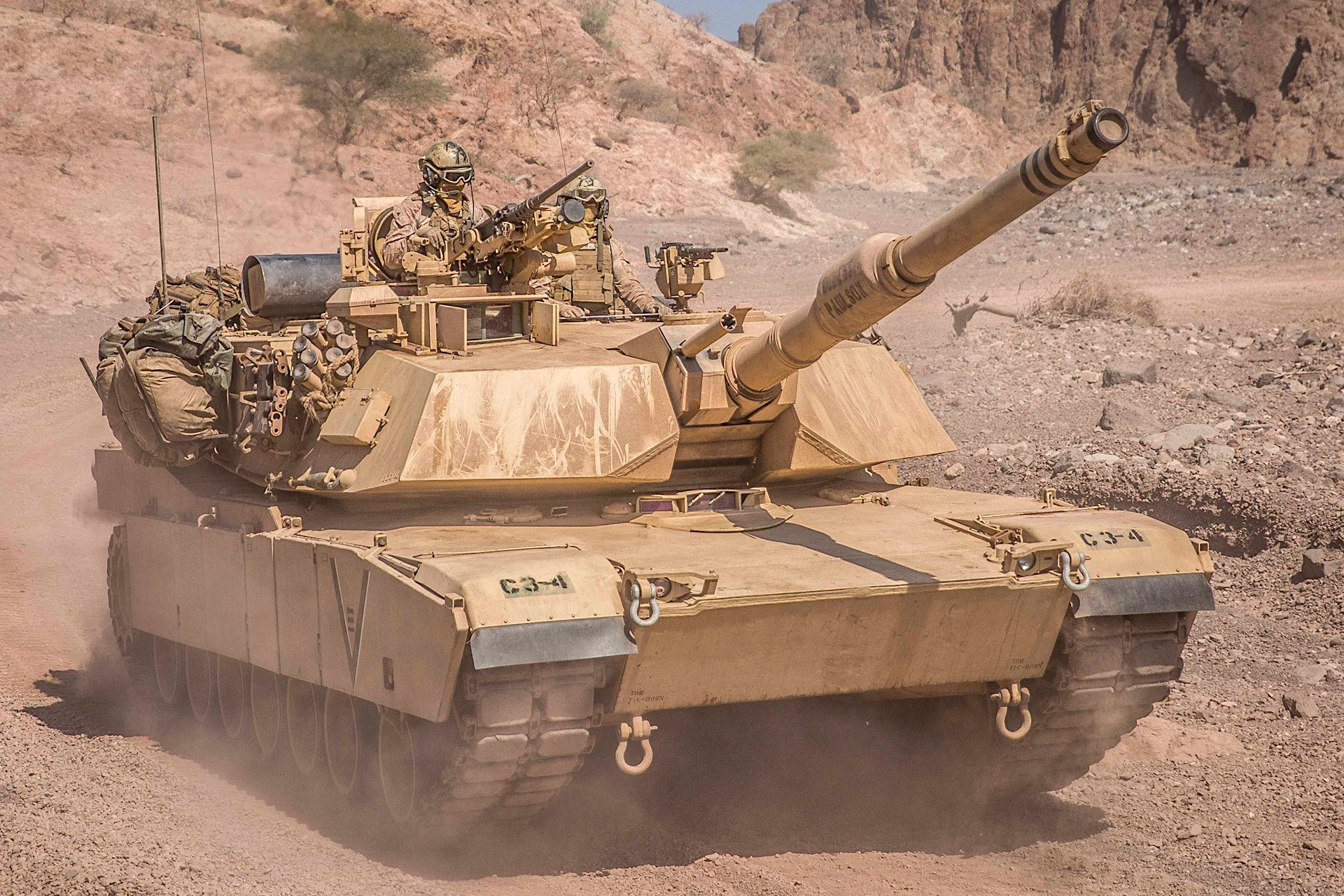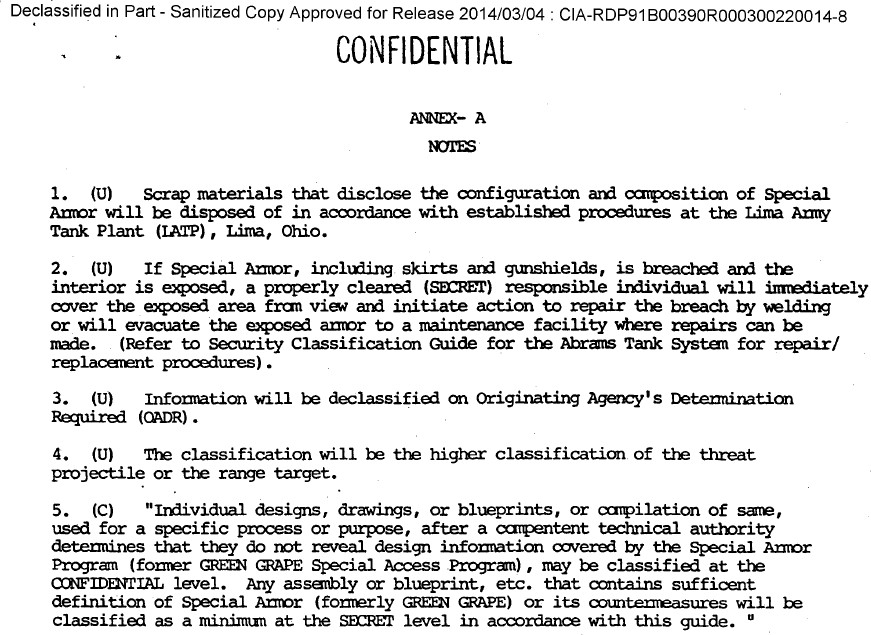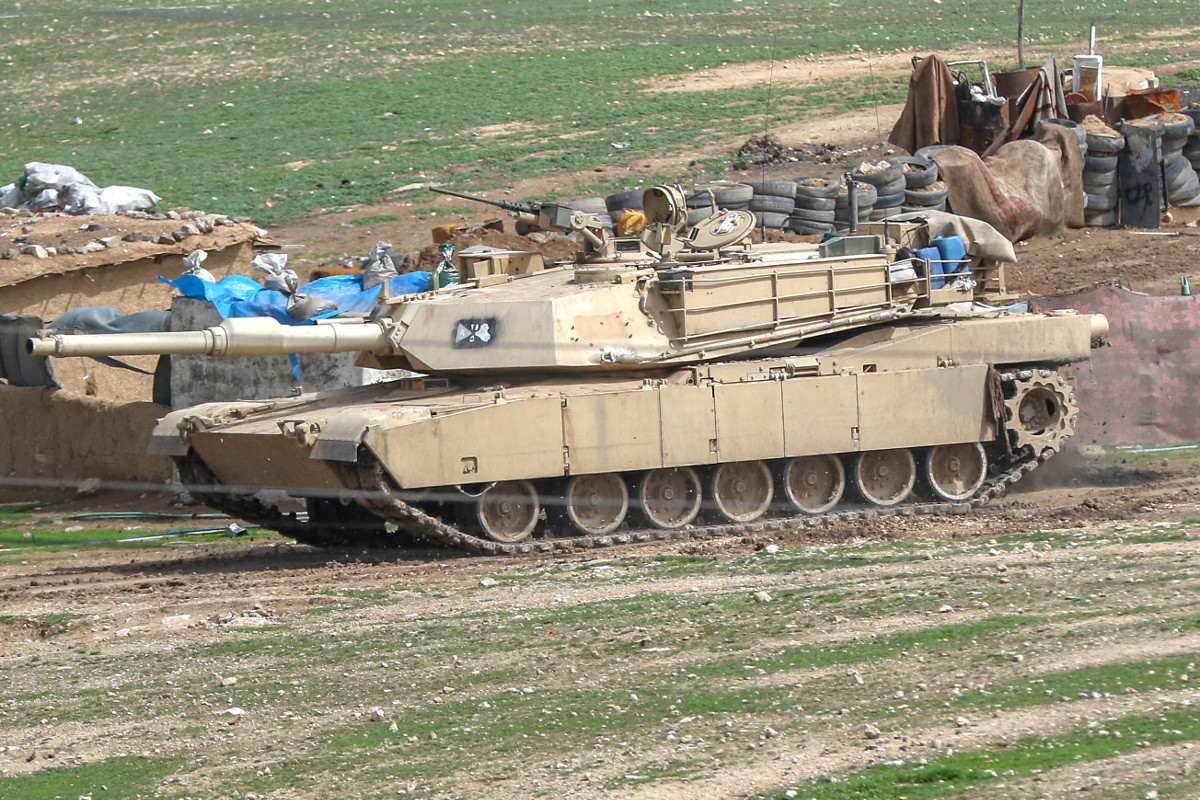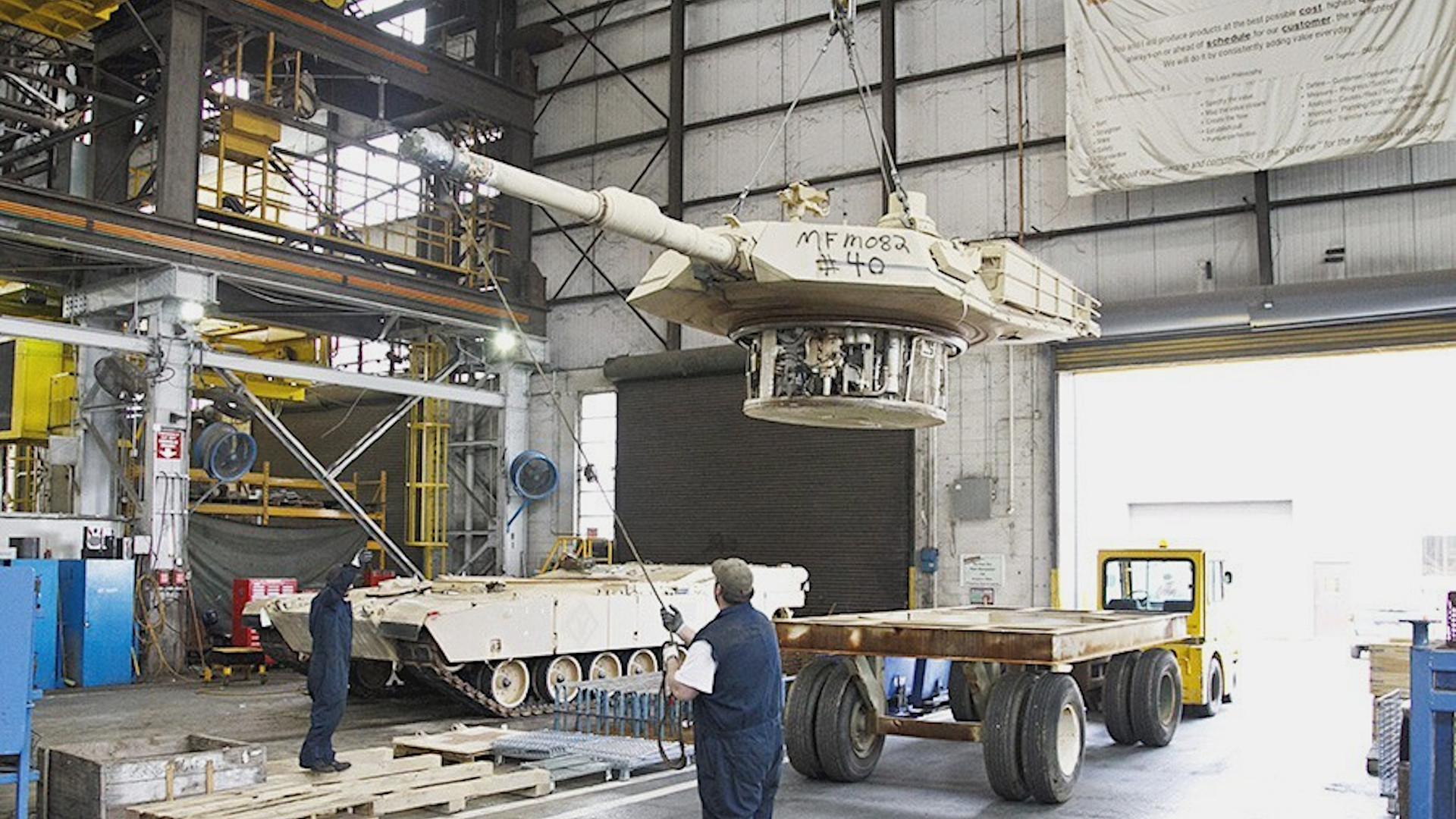As the U.S. government is now preparing to send dozens of M1 Abrams tanks to the Ukrainian military, much attention has been given to concerns about how their complex electronic components and especially their gas turbine propulsion systems could make them particularly difficult to operate and maintain. Though it’s not yet clear what specific variant of the Abrams Ukraine’s military is set to receive, the tanks will have to be in a unique export configuration. This is largely due to the highly classified armor packages found specifically on U.S. military versions, which contain depleted uranium, and that are not readily exportable even to major allies. In other words, the U.S. can’t just send its M1s to Ukraine.
President Joe Biden formally announced plans to send 31 M1 tanks to the Ukrainian armed forces today. The U.S. government will acquire the Abrams through the Ukraine Security Assistance Initiative (USAI). USAI provides funds to purchase weapon systems and other equipment, as well as training and other support services, on behalf of the Ukrainian military to support its longer-term needs. While the exact delivery schedule is not yet known, American officials have made clear the process will take months, not weeks. The first tanks may not arrive until late this year or even early next year.
In addition, it’s not immediately clear whether the M1s for Ukraine will be entirely new production tanks or if they will come through some other source. The U.S. Army has thousands of older Abrams in storage that a contractor could be hired to refurbish to a like-new condition or that could be used as donors to help with the construction of tanks that use a mixture of new and remanufactured components.

No matter what, they will need to be an exportable configuration before heading to Ukraine. So a big part of whatever that process ultimately entails will center on their armor package.
Starting in the late 1980s, many new-production M1A1s for the U.S. military began to feature composite armor packages that include depleted uranium (DU), a metal known for its high density, and other materials. Armor packages that incorporated DU were included on subsequent A2-series variants, as well. Many older American M1A1s were later upgraded with the newer armor and other improvements, including hundreds that were eventually brought up to the A2 standard.

To say that the DU composite armor packages are highly classified is almost an understatement. The development of the original version of this armor, often referred to simply as “heavy armor” or “special armor,” was conducted under a top-secret Special Access Program (SAP) nicknamed Green Grape. SAPs have extra layers of heavily compartmented security protocols to protect the disclosure of especially sensitive national security information, as you can read more about here.
In 1988, the classification level was downgraded to simply Secret. Even then, a now-declassified operational security guide regarding the “special armor” for the Abrams included the following passage:
“If [the] Special Armor, including skirts and gunshields, is breached and the interior is exposed, a properly cleared (Secret) responsible individual will immediately cover the exposed area from view and initiate action to repair the breach by welding or will evacuate the exposed armor to a maintenance facility were repairs can be made.”

Fast-forward 35 years. Many newer armor packages for the Abrams incorporate advanced ceramics. The operational security measures surrounding its protective features are still very tight. M1 variants are now in service in Australia, Egypt, Iraq, Kuwait, Morocco, and Saudia Arabia, but none of which are understood to feature armor with DU.
Instead, exportable armor packages that don’t include DU have been developed for the M1 series. Complete Abrams subvariants with other reduced capabilities compared to the latest versions in U.S. service have been created specifically for export, such as the M1A1Ms that the Iraqi Army operates.

The armor issue will put limits on how fast the U.S. government can supply any Abrams to Ukraine, whatever the source for those tanks might be. Even if the M1s for Ukraine are pulled from storage and rebuilt, it’s far more likely than not that they will have armor packages that will need changing. This is a complex process, as evidenced by recent publicly available contract documents related to the sale of Abrams tanks to Poland.
Poland’s future fleet of M1A2 SEPv3 Abrams tanks will include examples that feature refurbished M1A1 turrets. As part of the sale, the U.S. Army is facilitating the installation of a Foreign Military Sales-approved armor package onto those turrets.

The Army is currently looking to sole-source that work to General Dynamics Land Systems (GDLS). As part of its justification, the service has released information on why it rejected three alternative bids, underscoring the sensitives at play.
For instance, one of the companies, Safariland LLC, has “experience with vehicle armor is limited to steel and lightweight composite armor and does not include any work with DU armor,” a so-called Justification and Approval document, or J&A, dated September 15, 2022, explains. “They did not provide any experience with regards to the production or maintenance of Heavy Combat Vehicles, namely the M1A1 tank, nor any experience with the removal and installation of Abrams turret armor.”
Another company, MCM Learning, Inc., provided “no specific prior examples of manufacturing or armor installation capabilities were provided, but… stated they do have staff with M1A1 FSR [Field Service Representative] and program management experience, to include removal and installation of M1A1 armor, as well as certified Depleted Uranium,” according to the Army. However, “MCM also noted that it does not have access to the proper secure facilities to perform the work on DU armor.”
The third offer came from PLUS Ops. “PLUS Ops is a Polish company offering project management services in support of US-Poland defense efforts; they did not return a market survey or provide any evidence of manufacturing or armor installation capabilities,” per the J&A from last year.
The Army said it estimated it would take 64 months, or just over 5 years, to get any of these other contractors up to speed. The bulk of this time would be spent establishing secure and accredited facilities to do the work. Beyond the security issues, there are additional health and safety requirements that come with working with and otherwise handling DU.

It’s unclear how long the Army expects it to take to change out the armor on a single turret. However, the service did say in the J&A that its need to hire GLDS was driven in part because work on the first batch of 28 turrets “must commence by January 2023 and conclude in December 2023.”

The J&A added that the Army estimated the total cost of converting those turrets would be nearly $6 million.

With all this in mind, it remains to be seen how American officials might seek to mitigate these issues as part of the transfer of Abrams tanks to Ukraine. It also raises the question of whether it might be possible to acquire export variants that already have downgraded armor and other systems from other countries. The U.S. government’s use of USAI funds to help pay for the refurbishment of Soviet-designed T-72B tanks acquired from third parties for Ukraine last year provides an eye into how this might be done.
The two largest foreign operators of the Abrams are Egypt and Saudi Arabia. The Egyptian Army has around 1,360 M1A1s, at least on paper. The Saudi armed forces have some 370 more, 170 of which are reportedly in storage, according to the 2016 edition of The Military Balance from the International Institute for Strategic Studies (IISS).
Egypt and Saudi Arabia are both major partners of the United States. At the same time, however, both countries have, at best, complicated relations with Russia. So, it could be very hard to convince either of them to help in this endeavor due to the very real risk of upending their ties with Moscow.

Some sort of covert transfer arrangement might be possible, but would only add to the complexity of actually getting any Abrams tanks to Ukraine. The U.S. government could approach one of the smaller operators, but might similarly run into diplomatic or other hurdles.
Regardless of when the deliveries of any Abrams tanks might occur, training and logistics issues will further impact how quickly Ukraine’s military can then get them into the fight and its ability to utilize them effectively. Altogether, it may well turn out that the biggest immediate impact of a planned transfer of M1s from the United States to Ukraine may be indirect.
German authorities confirmed today that they will be giving Leopard 2 tanks to the Ukrainian armed forces and authorizing other countries to do the same. Officials in Germany had previously indicated that they would not do this until their American counterparts agreed to send Abrams. The Leopard 2 tanks, which are in service with many European nations, could be transferred sooner than their U.S. counterparts, which may, in the end, have to be built from scratch or deeply manufactured. Regardless, Germany’s supposed requirement that the U.S. donates Abrams if it is to donate Leopard 2 would be satisfied, although the M1s may not be delivered even for years.
This all comes as much attention is currently being given, and rightly so, to how fast any new major aid for Ukraine can go from being pledged to appearing on the battlefield. There is a growing consensus that the Russian military is planning to launch one or more major offensives this coming Spring. There are additional fears that even if the forces that it mobilizes are of low quality, the sheer volume of fresh units could still overwhelm Ukrainian defenses.
All told, while it seems increasingly likely that the U.S. government announcement about a transfer of M1 Abrams tanks to Ukraine is imminent, it very much remains to be seen when those tanks may actually arrive in the country. If they are indeed from U.S. stocks, due to their classified armor, that could be a very long time.
Contact the author: joe@thedrive.com
